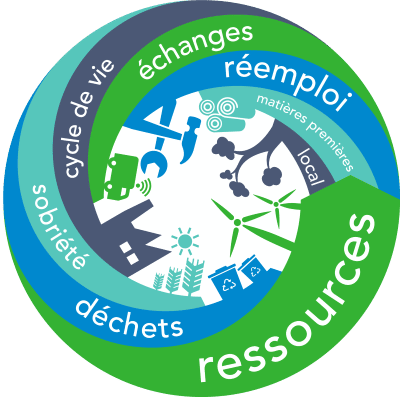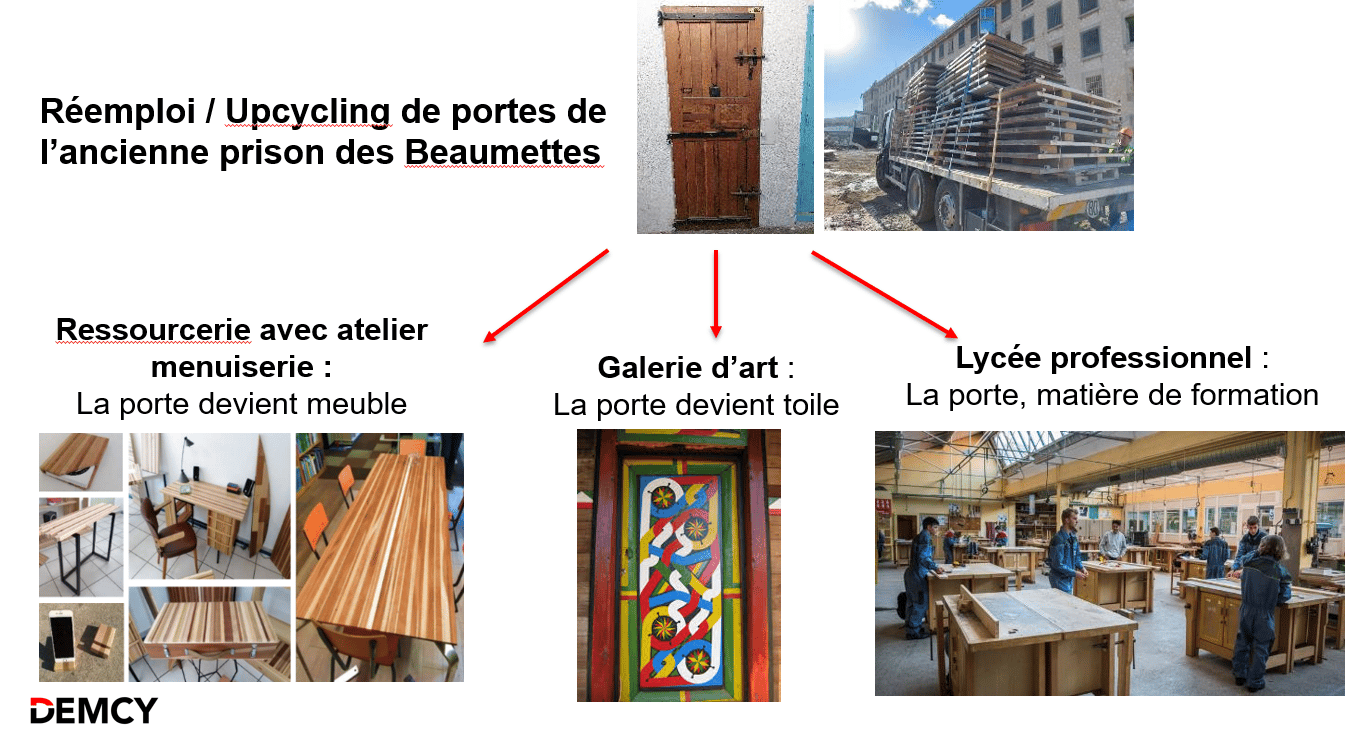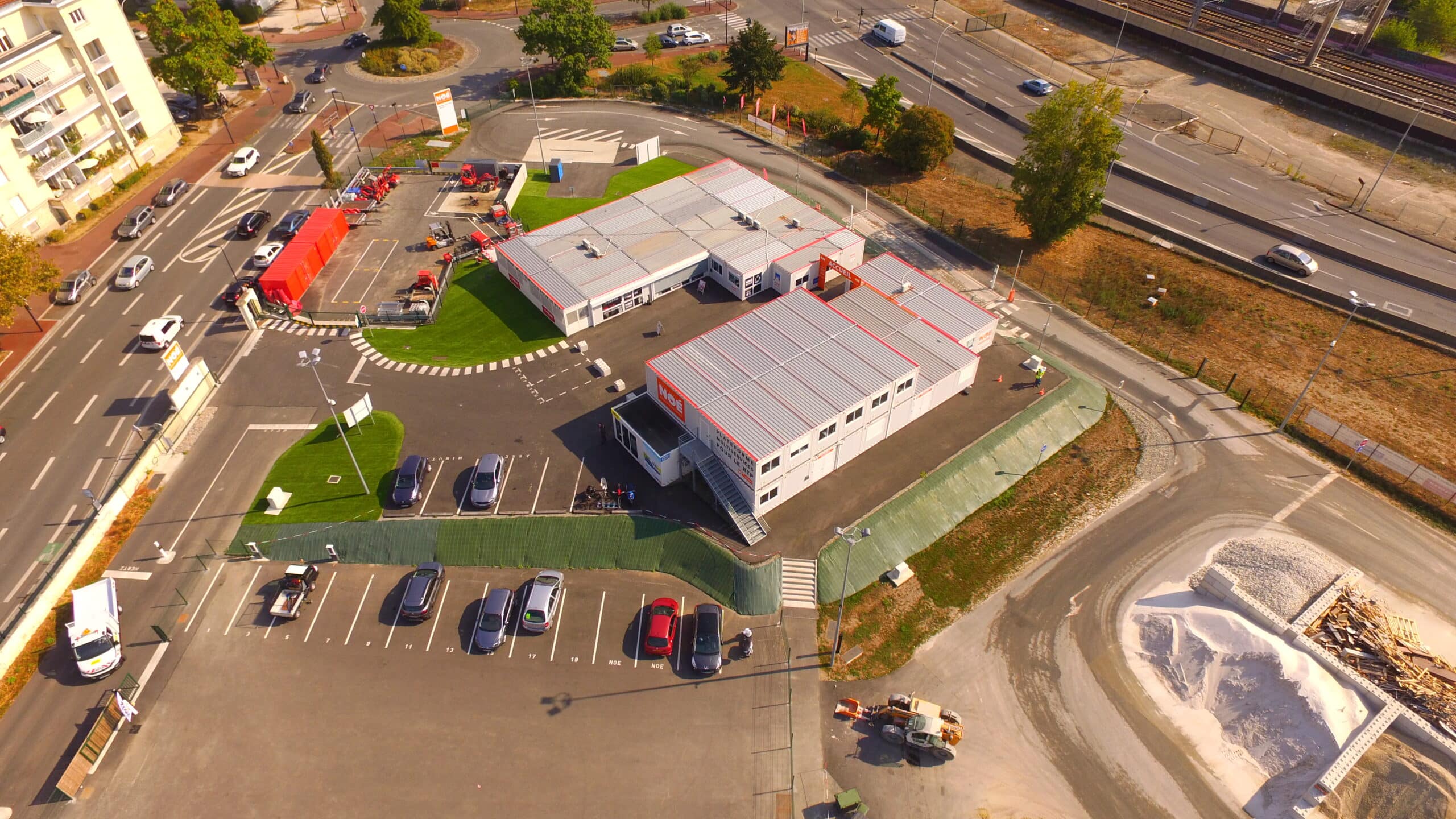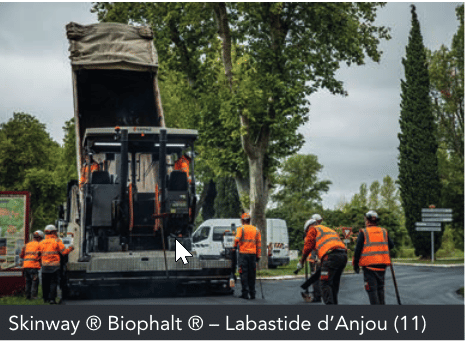Create a demonstrator of circular economy practices at the scale of an ecodistrict

Terms of the action or commitment
The aim is to integrate the concept of circular economy in the development of the eco-district from inception. Eiffage planned actions throughout the various phases of the eco-district works, from site clearance, through the demolition phase, and up to the construction phases.
1. Eiffage Aménagement will schedule early on the selective deconstruction of buildings to improve the recovery of deposited materials and products. The association Réavie will oversee the deconstruction and recovery of materials and products which are grouped together on an experimental reuse platform: the “Solid’R” platform. The latter will allow materials and products to be grouped together, refurbished and sold if they are not reused on site.
2. The project aims to reuse 100% of the demolition material and rubble on site via a crushing operation that will produce recycled aggregates. The new buildings will therefore be constructed using recycled concrete and incorporate other less carbon-intensive materials (notably novel concretes). These actions aim to enhance the valuation of local resources while taking a global approach to reducing carbon emissions. Eiffage ambitions to achieve the E3C1 grade of the Carbon-Energy Label for the whole eco-district.
1. Eiffage Aménagement will schedule early on the selective deconstruction of buildings to improve the recovery of deposited materials and products. The association Réavie will oversee the deconstruction and recovery of materials and products which are grouped together on an experimental reuse platform: the “Solid’R” platform. The latter will allow materials and products to be grouped together, refurbished and sold if they are not reused on site.
2. The project aims to reuse 100% of the demolition material and rubble on site via a crushing operation that will produce recycled aggregates. The new buildings will therefore be constructed using recycled concrete and incorporate other less carbon-intensive materials (notably novel concretes). These actions aim to enhance the valuation of local resources while taking a global approach to reducing carbon emissions. Eiffage ambitions to achieve the E3C1 grade of the Carbon-Energy Label for the whole eco-district.
Levers mobilized for circular economy (according to Ademe)

Implementation timeline
Starting year
2018
Ending year
2024
Main actors mobilized
Internal actors
Sustainable Development and Transversal Innovation department, Eiffage Construction, Development and Infrastructure (Eiffage Civil Engineering)
External actors
Chatenay-Malabry City Hall, Réavie association, Châtenay-Malabry Parc-Centrale semi-public company (SEMOP)
Geographic area
Chatenay-Malabry (La Vallée Eco-district), Hauts-de-Seine
Photo / Video
2022 follow-up of the action
Date of follow-up
June 2022
Methods of validation of the follow-up
internal
Status of the action
In progress
Completed
a) Results
Achieved
Partially achieved
Not achieved
b) Numerical / Qualitative information
Cancelled
Explanations
Comparison with the projected pace in the last publications
Keeping up with the times
In advance
Delayed
Partial / Final results
The E3S collaborative project is currently producing concrete walls and posts integrating 100% recycled aggregates which has obtained an ATEx (a temporary product approval for experimental use within a construction project) granted by the CSTB (Building’s Technical and Scientific Centre).
In addition, Eiffage Immobilier has included the Châtenay works with the “Reuse Booster”, intending to integrate reused elements in its construction program.
In addition, Eiffage Immobilier has included the Châtenay works with the “Reuse Booster”, intending to integrate reused elements in its construction program.
Company's comments
The E3S is joint effort led by Eiffage Group and the future University Gustave Eiffel and benefits from the “I-SITE FUTURE” grant which is part of the national Future Investments Program. The latter regroups the University Paris-Est Marne-La-Vallée, IFSTTAR, ESIEE, ENSG Géomatique, EIVP and the Paris-Est School of City and Territory Architecture
